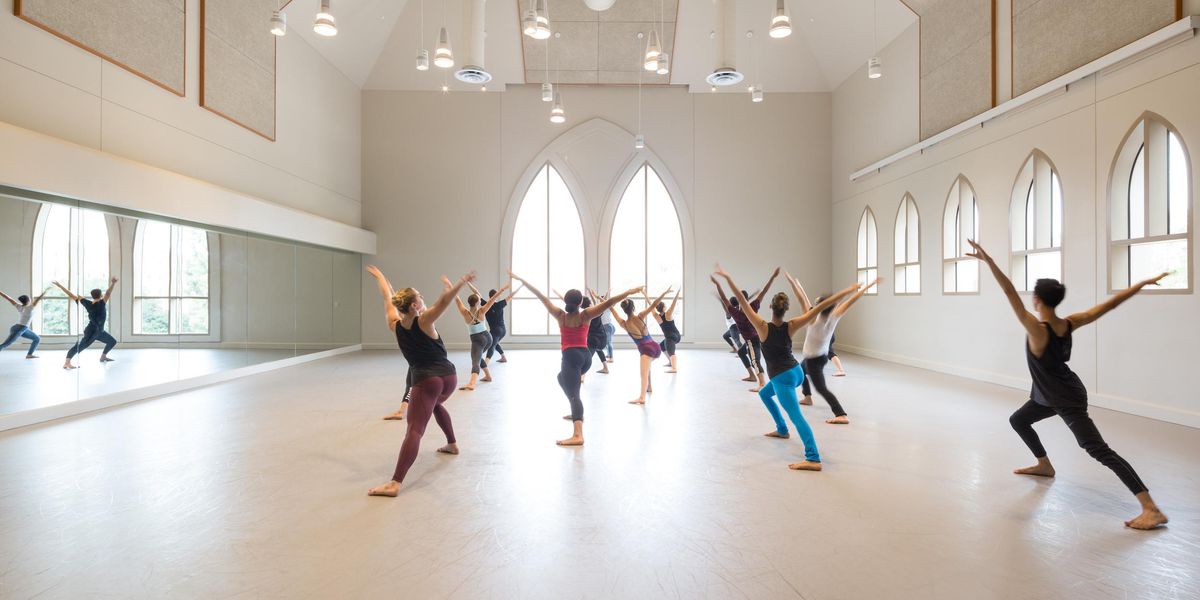Laughter & Tears at Kazuko Hirabayashi's Memorial Celebration
Symphony Space buzzed last night with anticipation and joy, a reunion for over 750 alumni from SUNY Purchase, Juilliard and The Ailey School as well as dancers from around the globe organized by Stephanie Tooman, Daniel Madoff and Terese Capucilli. The theater fell silent as a lone dancer knelt center stage, gazing up at a photo of Kazuko Hirabayashi, the beloved choreographer and mentor who passed earlier this year. The performances began with two solos choreographed by Kaz—as her students lovingly call her— which Kathryn Alter and Takehiro Ueyama delivered with fierce attack and quiet details. A festive commemoration by Jill Echo of the ‘best of’ phrases from Kaz’s legendary Graham technique classes followed, making the audience of former students smile (and wince) as we relived the challenges of studying with the master.
During a section featuring Kazuko’s dance inspirations, Christine Dakin fervently embodied Martha Graham’s iconic solo Lamentation. Skylar Brandt and Gabe Stone Shayer of American Ballet Theatre performed Antony Tudor’s sweet pas de deux, The Leaves Are Falling, a nod to Kaz’s love of ballet and relationship with Tudor, whom she looked up to as a mentor at Juilliard. The last set of pieces highlighted choreographers inspired by their time studying with Kazuko: Ohad Naharin, Doug Varone, Kyle Abraham and Robert Battle. Varone’s duet with Terese Capucilli, titled Short Story, was the most hauntingly powerful performance of the night, as the veteran performers wrestled with life and death, Capucilli unable to escape the clutch of Varone’s consuming mortality.
A biographical documentary created by Daniel Madoff narrated and wove between pieces, perhaps stealing the show. We glimpsed fascinating photos from Kazuko’s early childhood in Nagoya, Japan (where she remembers harvesting and eating “mostly potatoes” during World War II), learned of her secret love of dance as a teenager, saw her move to New York City in 1958 without speaking any English to enroll at Juilliard (she hated American food at first and ate “mostly potatoes…and candy”). She studied the art of Japanese flower arrangements and several languages, and loved bears. Kaz’s humor and renowned quotes had the mourning audience laughing throughout. “Martha Graham once said it take 10 years to train a dancer… I can do it in two,” she quipped.
Kazuko Hirabayashi at the Juilliard School in 1979. Credit Peter Schaaf
Archival footage showed young Kazuko performing with the Martha Graham Dance Company, as well as many of Kaz’s own choreographic works. One piece, titled Rainfrog, revealed a bounding, spirited young dancer named Ohad Naharin, who studied with Kazuko at Juilliard. Naharin stated his gratitude for the two years she opened her loft studio on Broome Street and encouraged him to create. He aptly described in the program notes Kazuko’s effect on her students: “What was unique about Kazuko was her ability to create a meaningful working atmosphere in which you always felt loved, appreciated, respected and challenged. She taught me the virtue of being able to laugh at ourselves,” says Naharin. The most poignant, unexpected moment arrived during Naharin’s Homage, a solo performed by the enchanting Bobbi Jene Smith, accompanied by video footage taken during Tomer Heymann’s work on the documentary “Mr. Gaga.” As Smith took the stage, we see Kazuko’s house in Harrison, NY. Smith exits as Kazuko opens the door and walks outside. The entire room seemed to hold its breath, before tears began to flow. She was frail and sunken, but her eyes still bright and mischievous. Writing on an iPad—by this point the disease that took her life, ALS, had already stolen her speech—she tells us with a grin, “I am so happy…I have no regrets.” It was Kaz’s final interview before her passing. While difficult to watch, it was Kazuko’s last lesson to leave behind: Even in the face of death there is something to smile about.





